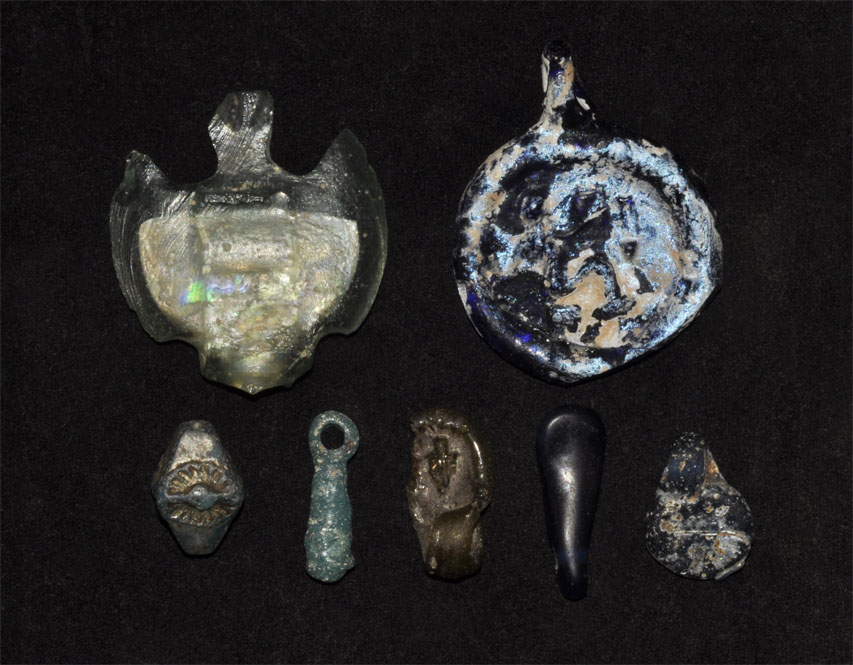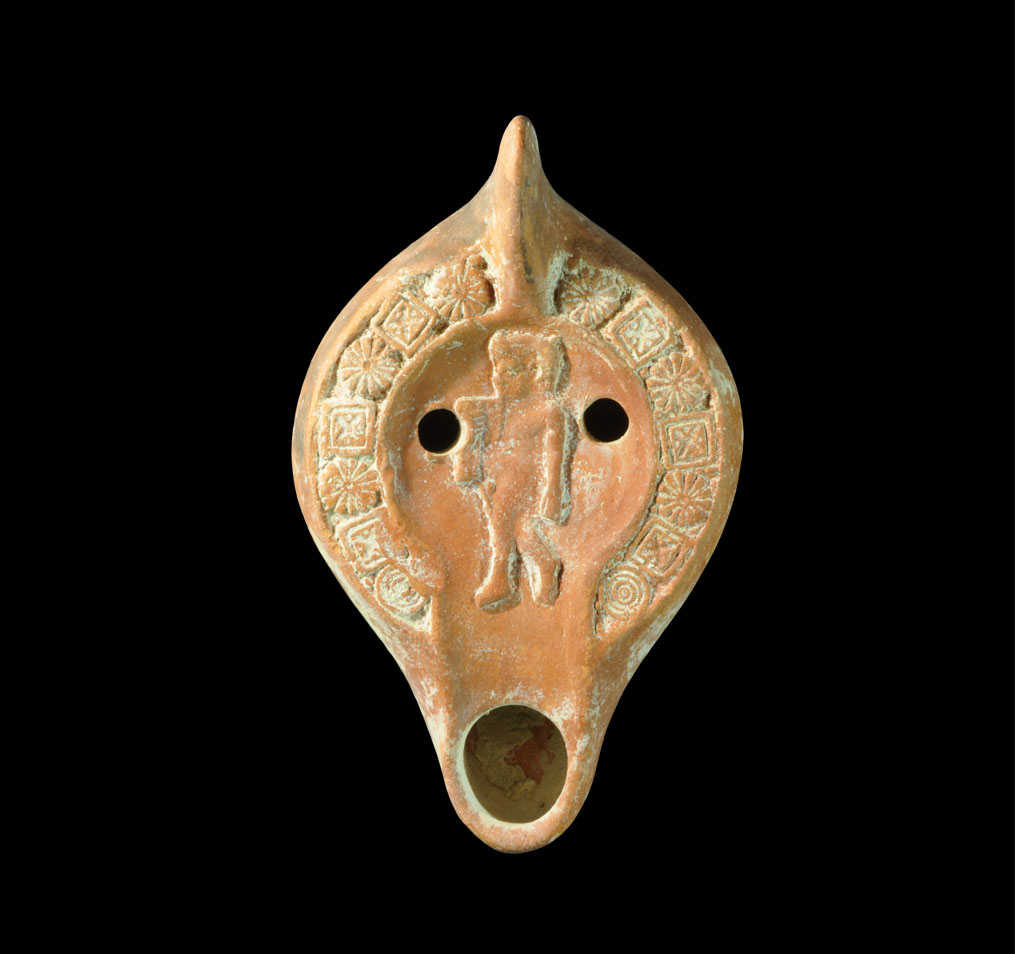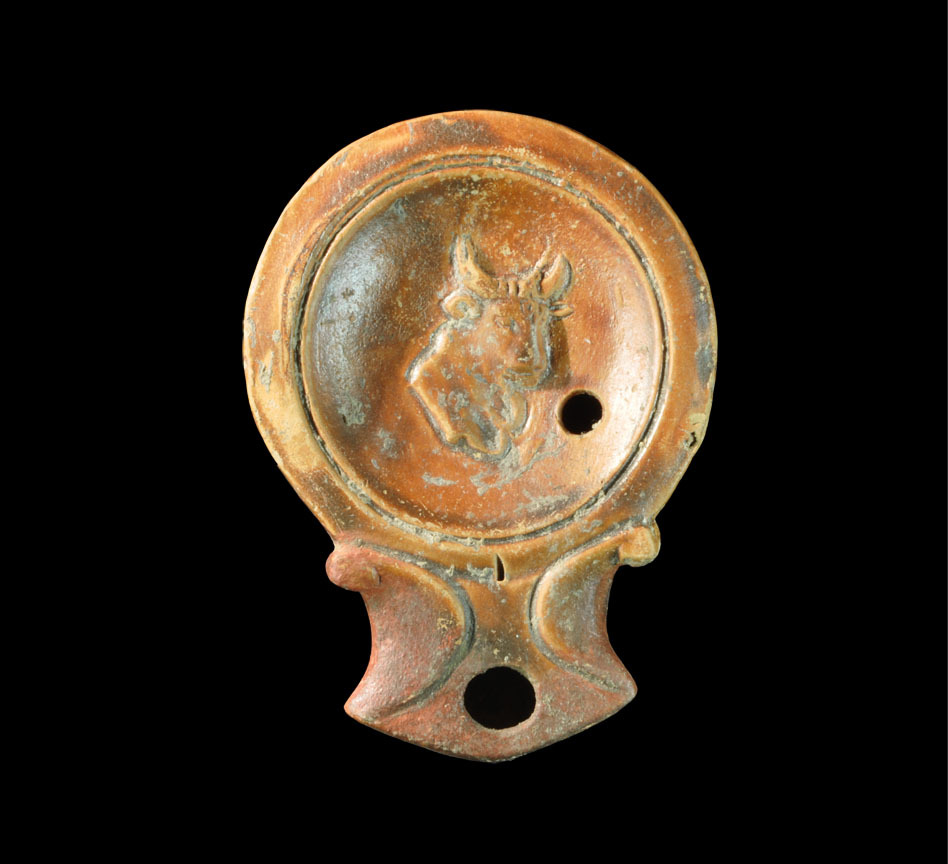ROMAN AMETHYSTINE QUARTZ PYXIS Circa 1st-2nd century AD. A carved amethystine quartz crystal jar or pyxis formed with a broad, shallow base, bulbous convex bowl and stepped neck; the lid a cast copper-alloy convex disc with concentric bands and a central spherical handle. Quartz, 220 grams, 71 mm.; copper-alloy, 22.4 grams, 49 mm. diameter. Extremely fine condition, complete and undamaged. Extremely rare. Provenance Ex Filk collection, collected in the 1950's. Literature For sources of amethyst, see Nicholson, P.T. and Shaw, I. (eds.) Ancient Egyptian Materials and Technology. Footnotes Amethyst was much prized in the ancient world for its crystalline sparkle and its pale purple-red coloration. The name derives from the Classical Greek word amethustos 'not intoxicated, sober'. It was said that an amethyst could prevent the bearer from becoming excessively drunk during feasting, and that drinking from a cup made entirely of amethyst prevented inebriation. Amethyst occurs naturally in Egypt. Probable sources of amethyst in the Roman period include the mines and quarries at Wadi el Hudi in the Eastern Desert between the Nile and the Red Sea and the Safaga region where the crystal occurs in cavities in the red granite. Although amethyst was principally used for items of jewellery (typically earrings and finger ring bezels), larger pieces were also being worked into small vessels as far back as the Predynastic Period in Egypt i.e. before circa 3,100 BC. The unworked stone was traded across the eastern Mediterranean as far as Crete during the Middle Kingdom (circa 2055 - 1650 BC).
ROMAN AMETHYSTINE QUARTZ PYXIS Circa 1st-2nd century AD. A carved amethystine quartz crystal jar or pyxis formed with a broad, shallow base, bulbous convex bowl and stepped neck; the lid a cast copper-alloy convex disc with concentric bands and a central spherical handle. Quartz, 220 grams, 71 mm.; copper-alloy, 22.4 grams, 49 mm. diameter. Extremely fine condition, complete and undamaged. Extremely rare. Provenance Ex Filk collection, collected in the 1950's. Literature For sources of amethyst, see Nicholson, P.T. and Shaw, I. (eds.) Ancient Egyptian Materials and Technology. Footnotes Amethyst was much prized in the ancient world for its crystalline sparkle and its pale purple-red coloration. The name derives from the Classical Greek word amethustos 'not intoxicated, sober'. It was said that an amethyst could prevent the bearer from becoming excessively drunk during feasting, and that drinking from a cup made entirely of amethyst prevented inebriation. Amethyst occurs naturally in Egypt. Probable sources of amethyst in the Roman period include the mines and quarries at Wadi el Hudi in the Eastern Desert between the Nile and the Red Sea and the Safaga region where the crystal occurs in cavities in the red granite. Although amethyst was principally used for items of jewellery (typically earrings and finger ring bezels), larger pieces were also being worked into small vessels as far back as the Predynastic Period in Egypt i.e. before circa 3,100 BC. The unworked stone was traded across the eastern Mediterranean as far as Crete during the Middle Kingdom (circa 2055 - 1650 BC).















Testen Sie LotSearch und seine Premium-Features 7 Tage - ohne Kosten!
Lassen Sie sich automatisch über neue Objekte in kommenden Auktionen benachrichtigen.
Suchauftrag anlegen